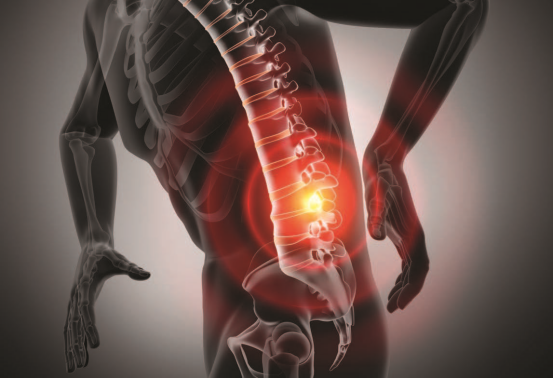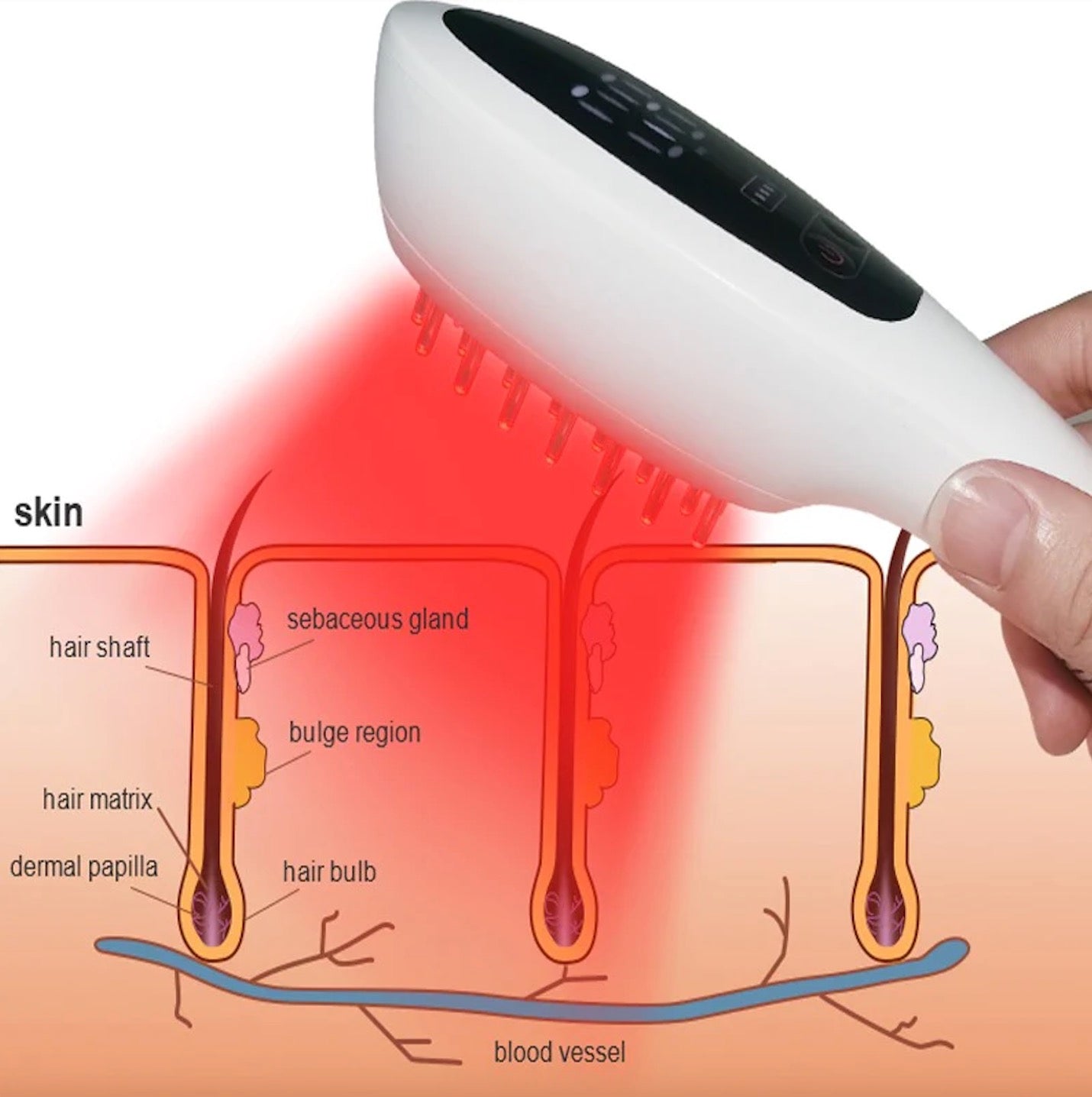Laser therapy for pain has recently gained prominence as a revolutionary method of managing pain, offering a paradigm shift in treating pain-related ailments.
This therapy stands out as a non-invasive yet powerful alternative to conventional treatments, leveraging light's therapeutic properties to ease pain and foster quicker healing.
Throughout this blog, we'll explore the intricacies of laser therapy for pain, its functioning mechanisms, and its potential as a comprehensive solution for both chronic and acute pain.

Understanding laser therapy
Laser therapy, often referred to as photobiomodulation, utilizes concentrated light beams as a therapeutic tool to promote healing and alleviate pain. Central to this treatment is the application of specific light wavelengths directly to the affected areas, targeting pain or inflammation. The light, emitted by a specialized laser device, permeates through the skin and reaches deeper tissues, triggering a series of biological responses that facilitate the body's natural recovery process.
There are mainly two types of lasers used in this therapy:
- Low-Level Lasers (LLLT): Often referred to as "cold lasers," these emit light at lower energy levels and are typically used for superficial tissue treatment. LLLT is known for stimulating cellular function and providing pain relief and inflammation reduction without causing damage or heat to the tissues.
- High-Level Lasers: These are more intense and can penetrate deeper into the body's tissues. High-level lasers are effective for deeper-seated pain conditions, providing a more robust and penetrating treatment that reaches deep muscle layers and joints.
Each type of laser has specific applications and is chosen based on the nature and depth of the condition being treated. By harnessing the power of light in a focused and controlled manner, laser therapy offers a unique approach to pain management, differentiating it from conventional medical treatments.
How laser therapy works to relieve pain
The process of laser therapy involves the absorption of light energy by the body's cells, which then triggers a series of biological reactions. Here's how it unfolds:
- Cellular Activation: When the laser light penetrates the skin, it is absorbed by the mitochondria within the cells. This absorption enhances the production of adenosine triphosphate (ATP), the energy currency of the cell. With more ATP available, cells increase their activity, leading to faster repair and regeneration.
- Reduction of Inflammation: Laser therapy helps in reducing inflammation by increasing blood circulation to the affected area. Enhanced blood flow means that more oxygen and nutrients are delivered to injured tissues, accelerating the healing process. Additionally, it helps in flushing out inflammatory mediators and reducing swelling.
- Acceleration of Tissue Repair: The energy from the laser stimulates the repair processes at the cellular level. It promotes collagen production, which is crucial for tissue repair and healing. This hastens the recovery of damaged tissues, including muscles, ligaments, and even nerves.
- Endorphin Release: Laser therapy can stimulate the release of endorphins, the body's natural painkillers. This not only provides immediate pain relief but also contributes to the overall sense of well-being, making it easier for patients to engage in physical therapy and other rehabilitative exercises.
Through these mechanisms, laser therapy offers a multi-faceted approach to pain relief. It not only addresses the symptoms of pain but also works at the cellular level to promote healing and reduce inflammation, offering a holistic solution to pain management

Applications of laser therapy in pain management
Laser therapy has proven highly effective in managing a broad range of pain-related issues. Its adaptability makes it suitable for diverse medical situations, including both long-standing chronic conditions and sudden, acute injuries. Below are some typical conditions that respond well to laser therapy:
- Arthritis: Laser therapy is particularly effective in managing arthritis, especially osteoarthritis and rheumatoid arthritis. It helps reduce joint inflammation and pain, improving mobility and quality of life for sufferers.
- Nerve Pain: Conditions like sciatica and neuropathy can be significantly alleviated with laser therapy. By targeting the affected nerves, it can reduce pain and inflammation, offering relief from debilitating nerve pain.
- Muscle Strains: Athletes and individuals with acute muscle injuries find laser therapy beneficial. It accelerates the healing process of strained muscles, reduces swelling, and helps in quicker recovery.
- Joint Pain: Beyond arthritis, laser therapy is effective in treating other joint-related issues like bursitis and tendonitis. It reduces joint inflammation and pain, improves function and flexibility.
- Back and Neck Pain: Chronic conditions like lower back pain and neck pain, often due to issues like herniated discs or muscle tension, respond well to laser therapy, offering a non-invasive alternative to more drastic measures like surgery.
The diverse application of laser therapy for pain, successfully treating conditions like arthritis, nerve pain, and muscle strains, showcases its extensive scope and efficacy in pain management.

Benefits and advantages compared with traditional pain treatments
Laser therapy stands out in the field of pain management for its distinct advantages over traditional treatment methods like medications and surgery. Here's a closer look at these benefits:
- Non-Invasiveness: Unlike surgical procedures, laser therapy for pain relief is entirely non-invasive. There are no incisions or needles involved, making it a more appealing option for those wary of surgery. This non-invasive nature greatly reduces the risk of infection and complications that are often associated with surgical interventions.
- Fewer Side Effects: Traditional pain medications, especially opioids and NSAIDs, can have significant side effects, including gastrointestinal issues, dependency, and other systemic effects. Laser therapy, on the other hand, has minimal to no side effects, making it a safer alternative for long-term pain management.
- Quicker Recovery Times: Recovery from surgery can take weeks to months, often requiring physical therapy and prolonged downtime. Laser therapy, in contrast, involves no recovery period. Patients can usually return to their daily activities immediately after treatment, making it a convenient option for those with busy lifestyles or work commitments.
- Decrease in Dependence on Pain Medication: Laser therapy often lessens or completely removes the necessity for pain medications for numerous individuals. This is especially significant considering the ongoing opioid crisis, as it provides a viable alternative for pain management that avoids the potential for addiction.
- Effectiveness in Chronic Conditions: Chronic pain conditions, which are often resistant to traditional treatments, can be effectively managed with laser therapy. It provides a sustainable option for long-term pain management, unlike some medications that lose their effectiveness over time or present risks with prolonged use.
- Holistic Treatment: Laser therapy addresses not just the symptoms of pain but also promotes natural healing processes in the body. By enhancing cellular function and tissue repair, it offers a more holistic approach to treating pain.
- Customizable Treatments: Laser therapy can be tailored to individual needs based on the type, intensity, and duration of the laser used. This customization allows for more targeted and effective treatment compared to some generalized pain medications or therapies.
To sum up, laser therapy presents a persuasive option compared to traditional methods of pain management, blending safety, ease of use, and efficacy. Its capability to deliver pain alleviation and encourage recovery, while reducing potential risks and side effects, establishes it as a growingly favored approach in contemporary pain management techniques.

Choosing the right laser therapy and equipment
Making an informed decision about laser therapy for pain relief involves understanding various factors about laser equipment and choosing the right healthcare professional. Here are some key considerations:
- Laser Type: As discussed earlier, there are mainly two types of lasers: low-level (cold lasers) and high-level. The choice depends on the condition being treated. Low-level lasers are typically used for superficial tissue treatments, while high-level lasers are suited for deeper tissue issues.
- Intensity and Wavelength: The effectiveness of laser therapy also depends on the intensity and wavelength of the laser used. Different conditions require different wavelengths for optimal results. Higher intensity lasers are more powerful and can penetrate deeper, but they must be used carefully to avoid tissue damage.
- Consulting with Healthcare Professionals: It's crucial to consult with a healthcare professional before undergoing laser therapy. They can provide advice based on your specific health condition, medical history, and the suitability of laser therapy for your case.
- Choosing a Reputable Clinic or Provider: Look for a clinic or provider with a good reputation and proven experience in laser therapy, such as Domer. Check their credentials, ask about their training in laser therapy, and inquire about the types of lasers they use.
- Ask for References or Testimonials: Hearing from other patients who have undergone laser therapy can provide insights into their experiences and the effectiveness of the treatment.
- Evaluate the Provider's Knowledge: During the consultation, assess the provider’s understanding of laser therapy. A knowledgeable provider should be able to explain the treatment process, expected outcomes, and any risks or side effects.
- Safety Standards and FDA Approval: Ensure that the clinic uses FDA-approved laser devices and adheres to safety standards. This is crucial for both the effectiveness and safety of the treatment.
- Aftercare and Support: Good providers offer aftercare advice and support. Check if the clinic provides guidance on activities or exercises post-treatment, and if they offer follow-up appointments to monitor progress.
- Insurance and Cost Considerations: Finally, consider the cost and whether the therapy is covered by your insurance. Some providers might offer payment plans or packages which can make the treatment more affordable.
By carefully considering these factors, you can make an informed decision about undergoing laser therapy and choose a provider that best suits your needs and ensures a safe and effective treatment experience.
Summing up
Effective pain management has been significantly enhanced by the advent of laser therapy for pain. This modern approach, characterized by its non-invasive technique and broad applicability, is steadily transforming how we address pain relief. If you're considering this innovative treatment, we encourage you to discuss it with a healthcare professional who can guide you based on your individual needs. Embrace the possibilities that laser therapy for pain offers and take a step towards a life with less pain and more comfort.




